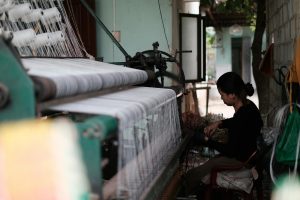Biotechnology Inspired Fabric Innovations Transforming Clothing Industries
The fashion industry has always been known for its fast-paced trends, constantly evolving and setting new standards for style and design. However, this desire for new and innovative clothing has also had a negative impact on the environment, with the industry being one of the biggest polluters in the world. In recent years, there has been a surge in sustainable and eco-friendly fashion, and one of the key players in this movement is biotechnology. By incorporating biotechnology into fabric production, clothing companies are not only creating more innovative and high-tech garments, but also reducing their environmental footprint. Let’s explore how biotechnology inspired fabric innovations are transforming the clothing industries.
The Rise of Biotechnology in Fashion
What is Biotechnology?
Biotechnology is the use of living organisms, systems, or processes to develop products or services that provide value to society. In the fashion industry, biotechnology is used to create sustainable and eco-friendly fabrics by modifying the DNA of plants, animals, and microorganisms. This allows for the production of fabrics that are not only environmentally friendly, but also durable, lightweight, and comfortable.
Benefits of Biotechnology in Fabric Production
Biotechnology has brought significant improvements to the fabric production process, making it more sustainable and efficient. Here are some of the key benefits of using biotechnology in fabric production:
1. Reduced Environmental Impact
Conventional fabric production methods involve the use of chemicals and large amounts of water, contributing to water pollution and environmental degradation. Biotechnology, on the other hand, uses natural processes and eliminates the need for harmful chemicals, making it a more environmentally friendly option. Biotechnology also allows for the production of fabrics using renewable resources, reducing the industry’s carbon footprint.
2. Increased Durability and Performance
By modifying the properties of fabrics at a molecular level, biotechnology has not only made them more sustainable, but also more durable, lightweight, and comfortable. This has resulted in longer-lasting and high-performance garments that require less frequent replacement, reducing the amount of textile waste produced by the industry.
3. Innovative Textile Solutions
With the help of biotechnology, textile companies are now able to create new solutions and materials that were previously impossible. For example, using biotechnology, researchers have successfully produced spider silk, a lightweight and durable material that is stronger than steel and has been used to develop high-performance athletic wear. This kind of innovation is driving the fashion industry towards a more sustainable and technologically advanced future.
Biotechnology Inspired Fabric Innovations
Biotechnology has given rise to a variety of sustainable and innovative fabrics, revolutionizing the fashion industry. Let’s take a look at some of the biotechnology inspired fabric innovations that are transforming the clothing industries:
1. Biofabricated Leather
Leather production is known to be one of the most environmentally damaging processes in the fashion industry. However, biofabricated leather, also known as vegan leather, is made from plant-based materials and uses biotechnology to mimic the properties of traditional leather. This not only reduces the environmental impact, but also provides a cruelty-free alternative to animal leather.
2. Bio-Spider Silk
As mentioned earlier, spider silk is one of the strongest and most durable materials known to exist. With biotechnology, scientists have been able to replicate the properties of spider silk by producing it in a lab using genetically modified microorganisms. This has resulted in a sustainable and high-performance alternative to traditional silk and cotton fabrics.
3. Recombinant Fibers
Recombinant fibers are created by combining different types of fibers, such as cotton and polyester, to create a stronger and more sustainable fabric. This not only reduces the amount of waste produced by the industry, but also results in a more durable and versatile fabric.
4. Biodegradable Fabrics
Biodegradable fabrics, such as lyocell and bamboo, are becoming increasingly popular in the fashion industry due to their eco-friendly properties. These fabrics are made from renewable resources and can biodegrade at the end of their life cycle, reducing the amount of pollution caused by textile waste.
The Future of Biotechnology in Fashion
With the fashion industry being one of the biggest contributors to pollution, there has been a growing demand for sustainable and eco-friendly options. Biotechnology has emerged as a game-changer in this industry, providing innovative solutions and materials that are transforming the way clothes are made. As technology continues to advance and the demand for sustainable fashion increases, we can expect to see even more biotechnology inspired fabric innovations in the future.
In conclusion, biotechnology has brought about a wave of positive change in the fashion industry. By merging science and sustainability, biotechnology inspired fabric innovations are not only transforming the clothing industries, but also paving the way for a more sustainable and eco-friendly fashion future.











